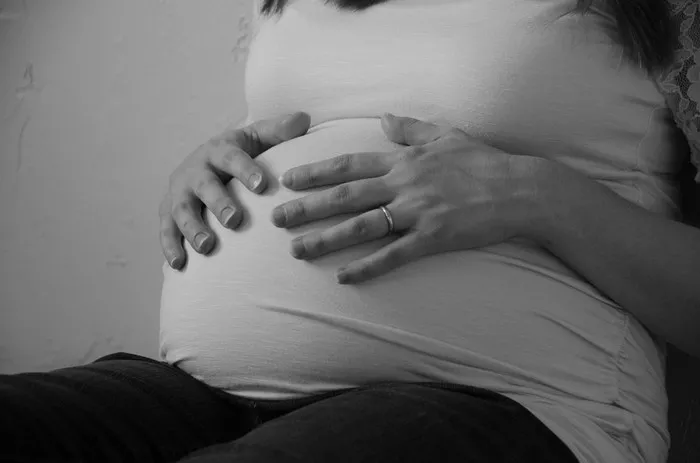Fibroids, also known as uterine leiomyomas, are noncancerous growths that develop within the uterus. While often harmless, fibroids can cause a range of symptoms that significantly impact a woman’s quality of life. One of the most common complaints associated with fibroids is heavy menstrual bleeding, or menorrhagia. Understanding why fibroids cause heavy periods is crucial for managing this condition effectively.
Understanding Uterine Fibroids
What Are Fibroids?
Fibroids are benign tumors made up of muscle and connective tissue. They can vary in size, ranging from tiny, undetectable growths to large masses that distort the uterus. Fibroids can grow in different parts of the uterus, including:
- The outer layer (subserosal fibroids).
- The muscular middle layer (intramural fibroids).
- The inner lining or cavity (submucosal fibroids).
Who Is Affected by Fibroids?
Fibroids are most common in women of reproductive age, particularly those in their 30s and 40s. Factors such as genetics, hormonal levels, and lifestyle may influence their development.
Symptoms of Fibroids
Not all fibroids cause symptoms, but when they do, heavy menstrual bleeding is one of the most prominent complaints. Other symptoms may include pelvic pain, frequent urination, and infertility.
The Connection Between Fibroids and Heavy Bleeding
Impact on Uterine Structure
Fibroids can alter the shape and structure of the uterus, leading to heavy bleeding. Submucosal fibroids, in particular, grow close to or within the uterine lining (endometrium). These fibroids disrupt the normal shedding process during menstruation, resulting in prolonged and heavier periods.
Increased Blood Supply
Fibroids often develop their own blood vessels to support their growth. This increased vascularity can lead to an excessive blood supply in the uterine area. During menstruation, this additional blood flow contributes to heavier bleeding.
Hormonal Influence
Estrogen and progesterone, two key hormones involved in the menstrual cycle, play a significant role in the growth of fibroids. These hormones can also make the uterine lining thicker, which increases the volume of tissue shed during menstruation. This, in turn, causes heavier and longer periods.
Enlargement of the Uterine Lining
Fibroids can increase the surface area of the endometrium. A larger surface area means there is more tissue to shed during menstruation, leading to heavier bleeding. Submucosal fibroids, which protrude into the uterine cavity, are particularly likely to cause this effect.
Interference with Uterine Contractions
During menstruation, the uterus contracts to expel its lining. Fibroids can interfere with these contractions, making it more difficult for the uterus to expel blood efficiently. This can prolong the duration of a period and increase the amount of blood lost.
Types of Fibroids That Cause Heavy Periods
Submucosal Fibroids
Submucosal fibroids are the most likely to cause heavy bleeding because of their location. They grow beneath the uterine lining and can distort the cavity, leading to abnormal bleeding patterns.
Intramural Fibroids
Fibroids that grow within the uterine muscle can also contribute to heavy periods. These fibroids increase the uterus’s overall size, leading to a thicker lining and more extensive shedding during menstruation.
Large Fibroids
Larger fibroids, regardless of their location, tend to cause more severe symptoms, including heavier bleeding. They put additional pressure on the uterine lining and may disrupt the normal menstrual process.
Complications of Heavy Bleeding from Fibroids
Iron-Deficiency Anemia
Chronic heavy bleeding can lead to iron-deficiency anemia, a condition where the body lacks enough healthy red blood cells to carry oxygen. Symptoms of anemia include fatigue, weakness, dizziness, and pale skin.
Reduced Quality of Life
Heavy periods can interfere with daily activities, causing women to miss work, school, or social events. The need for frequent changes of menstrual products can also be inconvenient and stressful.
Fertility Challenges
In some cases, heavy bleeding and the presence of fibroids can affect fertility. Fibroids can block the fallopian tubes, interfere with embryo implantation, or cause complications during pregnancy.
Diagnosis of Fibroids
Medical History and Symptoms
Doctors typically begin by asking about a woman’s menstrual history and symptoms. Heavy bleeding that lasts more than seven days or requires frequent changes of sanitary products may indicate fibroids.
Pelvic Examination
A pelvic exam allows the doctor to check for an enlarged or irregularly shaped uterus, which may suggest fibroids.
Imaging Tests
Ultrasound and MRI scans provide detailed images of the uterus, helping to identify the size, number, and location of fibroids. Hysterosonography or hysteroscopy may also be used to evaluate fibroids that affect the uterine cavity.
Management of Heavy Bleeding Caused by Fibroids
Lifestyle and Home Remedies
For mild cases, lifestyle changes such as maintaining a healthy weight, reducing stress, and eating iron-rich foods can help manage symptoms. However, these measures are not a cure for fibroids.
Medical Treatment
Medications can help reduce heavy bleeding and shrink fibroids. Common options include:
- Hormonal therapies such as birth control pills or progestin-releasing intrauterine devices (IUDs).
- Gonadotropin-releasing hormone (GnRH) agonists, which reduce hormone levels and shrink fibroids temporarily.
Surgical Options
When symptoms are severe or do not respond to medication, surgery may be necessary. Procedures include:
- Myomectomy: Removal of fibroids while preserving the uterus.
- Hysterectomy: Complete removal of the uterus, which is a permanent solution for fibroids.
- Uterine Artery Embolization: A minimally invasive procedure that cuts off the blood supply to fibroids, causing them to shrink.
When to Seek Medical Attention
Heavy bleeding from fibroids should not be ignored, especially if it interferes with daily life or causes symptoms of anemia. Women experiencing prolonged or severe periods, pelvic pain, or difficulty conceiving should consult a gynecologist for evaluation and treatment.
Conclusion
Fibroids are a common cause of heavy menstrual bleeding due to their impact on the uterine structure, blood supply, and hormonal environment. While heavy periods can significantly affect a woman’s quality of life, there are effective treatments available. Early diagnosis and management are essential to reduce complications and improve overall health. If you suspect fibroids are causing heavy periods, consult a healthcare professional to explore your options for relief and treatment.
Related topics:
Why Do Submucosal Fibroids Cause Heavy Bleeding?


























